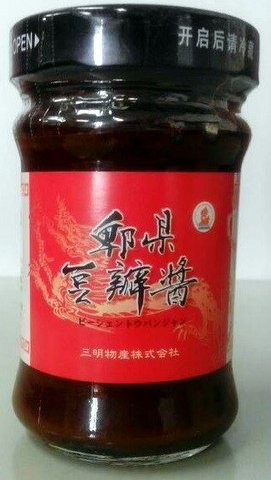I was watching YouTube the other day and the algorithm auto-suggested a video by Iron Chef Chen Kenichi on how to make Mapo Tofu at home. The video was good, but the home-version used substitute ingredients that are easily found in Japan but not North America. A further look into the channel showed a video from over a year ago where he gives his regular mapo tofu recipe. I then decided if I’m going to spend a day sourcing ingredients I don’t commonly use, I may as well go all-in and try out his standard recipe.
Using my limited Japanese, YouTube auto-generated Japanese CC translations, a dozen views, and Google Translate on the Japanese recipe listed at the end of the video, I cobbled together an English translated recipe so I could try this at home. The Iron Chef unfortunately, doesn’t follow the video’s recipe in-order. He makes a different dish that uses the similar ingredients (Zha Jiang 炸酱), then uses that to make the mapo. I would still highly recommend watching the video, as you can learn good cooking techniques by watching him perform the recipe steps. Also I would recommend using subtitles Auto-translated to English when possible. The accuracy of the translation is a bit off-the-mark, but you’ll get a reasonable idea of what’s being said in the video.
Chen-Kenichi-Mapo-Tofu-Recipehttps://ubercow.com/b/wp-content/uploads/2021/01/Chen-Kenichi-Mapo-Tofu-Recipe.pdf
Getting the Ingredients
Your first step (unless you cook Sichuan food regularly) will be to find those Chinese ingredients not typically found in your regular supermarket. Your best bet would be to head to a neighborhood Chinese grocery or Asian market. If there isn’t one nearby, Amazon is surprisingly a good source for these ingredients.
Tofu blocks come in all shapes and sizes so your main goal is to get 600g-700g of preferably firm tofu. Negi (Japanese leek) isn’t that common in North America but can be replaced with green onions (scallions). For the Sichuan ingredients, if you’re in a grocery or market, use the Chinese characters to double-check your bottles. English names vary and you may grab the wrong item. If you’re going with Amazon, searching either the English name or the Mandarin name [in brackets] appears to point you to the right product. Finally, if you don’t have a wok, a large pan or skillet will work fine.
Notes from the Video
When cooking the ground pork, he says to cook until the oil is no longer cloudy. He also cooks the tofu in salted water until it has a bouncy (“purun-purun”) texture. The Iron Chef slowly stirs the starch paste into the mapo, a third at a time. Toward the end of the video, the Iron Chef says Sansho Oil 花山油 and Sansho Pepper 花山椒. Those products (more easily found in Japan) would be fine as replacements for Sichuan Peppercorn Oil and Sichuan Chili Powder.

Recipe Results & Iron Chef Doubanjiang
After translating the recipe, I gave it a try a week ago. I’m not a chef but it was really tasty and something I’m definitely keeping in my home cookbook. Probably more of a “special occasion” meal though as it takes more prep work than your average recipe. Now, did it taste like Iron Chef Chen Kenichi’s mapo tofu? I’ve visited a few of his restaurants over the years, and I’d, unfortunately, say no. Not due to the recipe, but because of the ingredients.

A couple of years ago in the Hakozaki neighborhood of Nihonbashi, I was doing some neighborhood scouting on Google Maps before going to bed. A location tagged as an ‘Asian Grocery‘ a couple of blocks away really piqued my interest. (because aren’t all groceries in Japan, ‘Asian Groceries’? 😋) A walk to the store revealed a shop that specialized in Chinese food products. At the shop, they sold bottles of doubanjiang with a picture of Chen Kenichi on the back. They also had Chinese recipes printed out in Japanese available for free, so we left with a bottle and a generic mapo tofu recipe.
Upon returning home, we tried the recipe with the special doubanjiang. The mapo didn’t come out as nice as the recipe from the video, but the flavor was much closer to the mapo you can get at his restaurants. On later trips, we noticed that they sell the doubanjiang at the counter of some of his restaurants. If you’re able to get your hands on this online or in-person, I feel that combining that with the recipe from the video will get your mapo tasting much closer to what he sells in his restaurants.





1 Comment
First some heartbreaking news, Iron Chef Chen Kenichi has passed away earlier this month; may he rest in peace.
In remembrance of the Iron Chef, I pulled out the Doubanjiang bottle I picked up from his restaurant at the end of last year and followed his recipe once again. So much more flavor and texture than other mapo tofu recipes that I’ve tried. May his culinary brilliance and artistry continue to live on through his food and recipes.